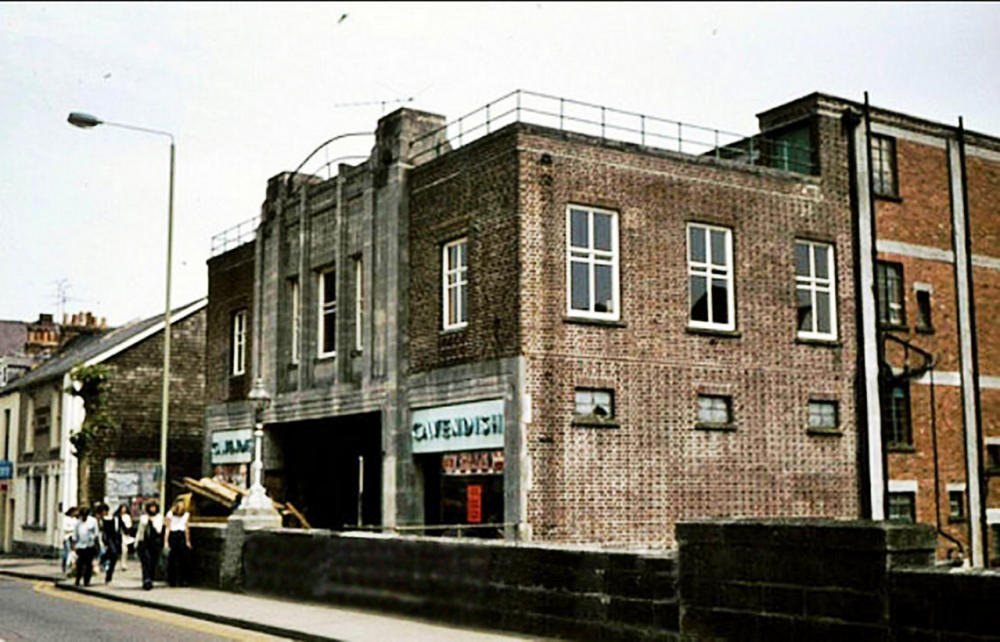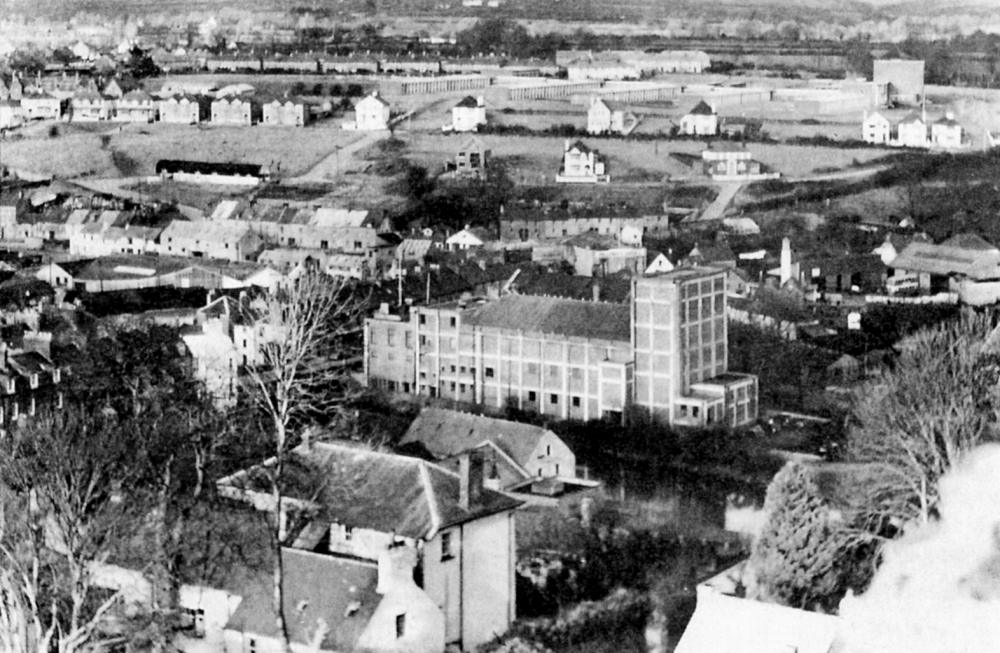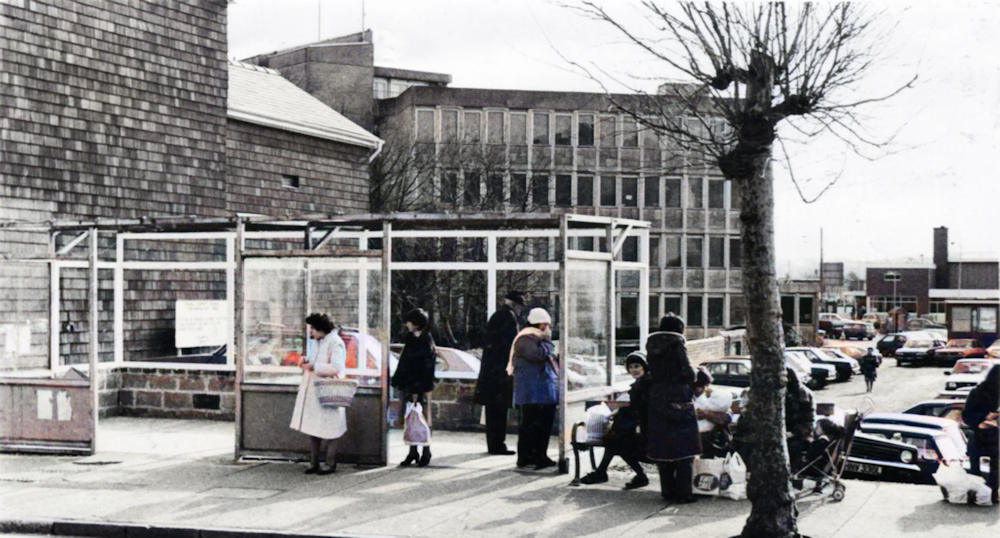For decades the mistakable outline of the County Theatre dominated Picton Place and the riverside just below the New Bridge. Cardiff based Howard Williams was the architect who designed the County Theatre and also oversaw the construction. During the construction period and at the time  it opened it was heavily criticised as a “luminous red-brick monstrosity” but it soon became part of town life and in the years that followed it was the venue many live shows as well operating as a cinema.
it opened it was heavily criticised as a “luminous red-brick monstrosity” but it soon became part of town life and in the years that followed it was the venue many live shows as well operating as a cinema.
Capable of accommodating up to 1,200 people it was purpose designed as a theatre complete changing rooms, an orchestra pit, cinema projection room and a very tall fly-tower; in addition it had a snooker hall and restaurant. The grand entrance with its terrazzo floor was flanked by the Cavendish Furniture showrooms. At the rear of the building there was, for a time, a small BBC studio used by reporters in West Wales to submit radio reports.
In addition to hosting plays and revues it also staged concerts featuring world famous performers such as Paul Robeson who appeared there in 1938. Live performances remained popular after the Second World War with shows ranging from revues like “This was the Army” and “Les Fleurettes” to the Don Ross Imperial Circus, and seasons of repertory plays from companies such as Harry Hansen’s.
 But from the mid-fifties onwards the number of live performances started to decline and by November 1957 a newspaper review stated “Last week Haverfordwest County played its first Variety Bill for a long time with Gladys Morgan and her family, The Zodiacs, Eddie Fox and Beryl, Idris and Belle. The Sensational Shermans, Lorne Leslie, the Geddes Brothers, and Revel & Janetta.”
But from the mid-fifties onwards the number of live performances started to decline and by November 1957 a newspaper review stated “Last week Haverfordwest County played its first Variety Bill for a long time with Gladys Morgan and her family, The Zodiacs, Eddie Fox and Beryl, Idris and Belle. The Sensational Shermans, Lorne Leslie, the Geddes Brothers, and Revel & Janetta.”
Pantomime had become an annual staple and became an established part of the Christmas family celebrations for local people. In 1948-49 the production was ‘Aladdin’ with Sandy Powell and the following year it was ‘Cinderella’; 1958-9 saw the production of ‘Dick Whittington’ with Alan Gale and Sandra Wells; and the 1959-60 “Jack and the Beanstalk” with Molicia performing her fountain act.
For many years the basement of the building was home to the Lucania Billiards Hall known locally as ‘The Luke’. Established as a temperance billiards hall during the 1920s in Romford the original hall spawned Lucania Temperance Billiard Halls Ltd. and spread across the southern Britain. By the early 1960s interest in billiards and snooker was waning and the tables were sold and the basement became The Quay Club which was a coffee bar/disco and then later became a nightclub called The Waterfront.
The snooker tables were sold to John Thomas who then opened The Old Quay Snooker Club which, incidentally was also a teetotal establishment.
Although controversial when built there was much sadness when the County Theatre was demolished but perhaps  not so much for the loss of the building (it could never be claimed to have improved the appearance of Haverfordwest) but for what the loss represented – a substantial theatre equipped for all sorts of live performances as well as a cinema. By the late 1970s it had not been used as a cinema for several years being utilised instead as storage for building materials. Ultimately the end of live performances, the decline in cinema attendances during the video boom of the 1970s, and the shear scale of a building with a capacity of more than a thousand all contributed to the closure of The County Theatre.
not so much for the loss of the building (it could never be claimed to have improved the appearance of Haverfordwest) but for what the loss represented – a substantial theatre equipped for all sorts of live performances as well as a cinema. By the late 1970s it had not been used as a cinema for several years being utilised instead as storage for building materials. Ultimately the end of live performances, the decline in cinema attendances during the video boom of the 1970s, and the shear scale of a building with a capacity of more than a thousand all contributed to the closure of The County Theatre.
It was demolished in the early 1980s and for a few years the site lay fallow used only as an overflow car park for Cambria House until a new council office block was built in 1986.


